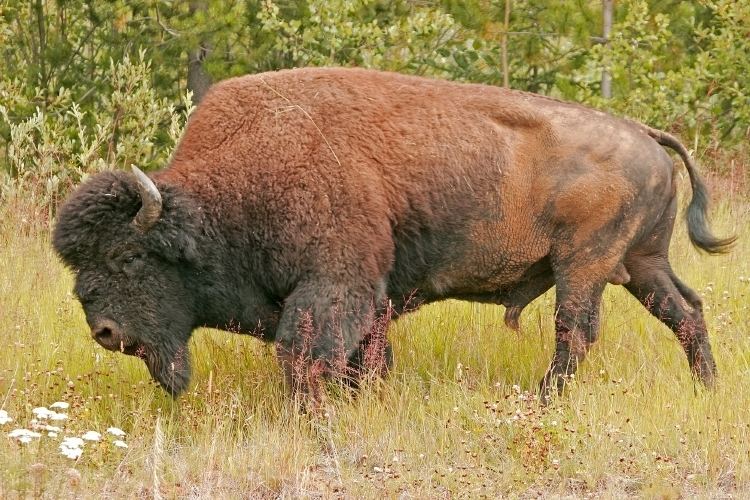 | ||
Canada lies within the fifteen terrestrial and five marine ecozones. The largest marine ecozone is the Arctic Archipelago whereas the terrestrial ecozone is the Boreal Shield. The main biomes of Canada are tundra, boreal forest, mixed forest, broadleaf forest, prairies, Rocky Mountains, and temperate coniferous forests which hosts significant biodiversity.
Contents
- Fauna
- Conservation
- Recent extinctions
- Flora of Canada
- National flora and fauna symbols of Canada
- References
In recent decades, human encroachment has posed a threat to Canada's wildlife; in response National Wildlife Areas (NWAs) are set aside under the Canada Wildlife Act. There are National Parks, National Wildlife Areas, as well as Migratory Bird Sanctuaries. National parks protect natural regions in Canada. NWAs conserve habitats for species at risk. Migratory bird sanctuaries protect the breeding grounds of migratory birds during the nesting season.
Fauna
The fauna of Canada can be grouped into mammals, reptiles, amphibians, fish, birds, and insects. Canada is known for its mammals such as American bison, Arctic hare, badger, beaver, black bear, bobcat, little brown bat, Canada lynx, reindeer (caribou), coyote, grizzly bears, gray wolf, red fox, lemming, meadow mice, moose, mountain lion, mule deer, musk ox, muskrat, polar bear, porcupine, prairie dog, pronghorn, raccoon, pinniped (seal), skunk, snowshoe hare, walrus, wapiti, weasel, whale, white tailed deer, wolverine. To name a few of the birds identified with Canada would be the American robin, Bicknell's thrush, black-capped chickadee, blue jay, burrowing owl, Canada goose, canvasback, downy woodpecker, gray jay, great blue heron, great horned owl, greater snow goose, killdeer, loons, piping plover, purple martin, ruby-throated hummingbird, sharp-shinned hawk, Cooper's hawk, and whooping crane. The biology survey of Canada cites that there are approximately 55,000 species of insects, and 11,000 species of mites and spiders.
Conservation
Large and charismatic mammals are important for wildlife tourism in Canada and several national parks and wildlife sanctuaries cater to these needs. The Banff Wildlife Crossings Project was undertaken to preserve wildlife crossing the Trans-Canada Highway in British Columbia providing underpasses and overpasses to wildlife along the route.
Recent extinctions
The exploitation of land and forest resources by humans along with hunting and trapping for food and sport has led to the extinction of many species in Canada in recent times. Woodland caribou, present in several provinces, are threatened by human hunting, wolf predation, as well as habitat disturbance from forestry activities, roads, mining and exploration, pipelines and oil and gas production. The Newfoundland population of marten is threatened by habitat loss, accidental trapping and prey availability.
Flora of Canada
According to environment Canada the nation of Canada hosts approximately 17,000 identified species of trees, flowers, herbs, ferns, mosses and other flora. Some trees native to Canada are black spruce, white spruce, balsam fir, larch (tamarack), lodgepole pine, jack pine, trembling & large-toothed aspen, cottonwood and white birch, and balsam poplar.
National flora and fauna symbols of Canada
The beaver's emblematic status originated from the fact much of Canada's early economic history was tied to the fur trade in beaver fur, which was used to make European fashionable hats. Another reason for the beaver's status in Canadian heraldry is that the beaver represents the symbol of industry. The beaver was adopted as the national emblem in 1975.
The Canadian horse was declared an official Canadian symbol in 1909 and commonly appears in images with the Royal Canadian Mounted Police.
The maple leaf and maple tree is the national flora symbol of Canada. The leaf was declared approximately 1860 and the maple tree 1996.
